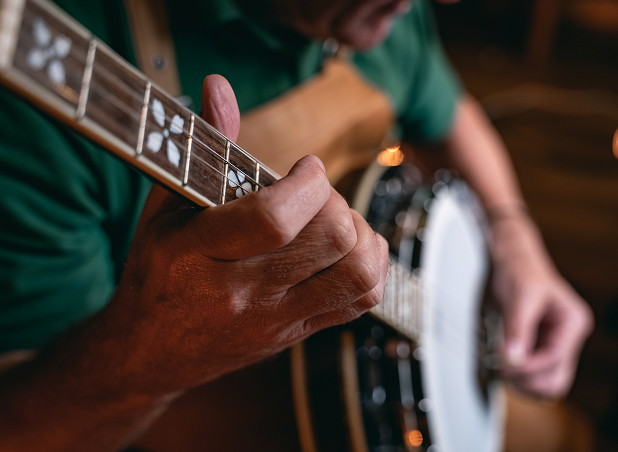
Updated for 2025 • Top 7 beginner models • Expert tips from Paraic McNeela
Choosing your first banjo is exciting — but with so many types, sizes and options out there, it can also feel overwhelming. Should you start with a 4-string or 5-string? How much should you really spend? And most importantly: which banjo will help you enjoy playing from the very first day?
As someone who’s built and sold thousands of banjos over the last four decades, I know the difference a well-chosen beginner banjo makes. That’s why I’ve put together this guide to the best beginner banjos in 2025 — with my recommendations to help you make the right choice.
Beginner Banjos at a Glance: Which banjo should I buy?
Quick Picks — Best Beginner Banjos in 2025
- Best value overall — McNeela Celt Banjo (19 Fret): authentic Irish tone, great setup, beginner-friendly.
- Best Irish trad option — McNeela Celt 17 Fret Banjo: shorter scale, easier playability for smaller hands.
- Best 5-string starter — Renegade 5-String Banjo: affordable entry point into bluegrass & folk.
- Best value for money — Koda 17/19 Fret Banjos: solid budget choice with good tuning stability.
- Best upgrade-ready beginner banjo — Freedom 5-String Banjo: higher build quality, gig-ready tone.
- Best for kids/small hands — Celt 17 Fret: compact scale, comfortable action.
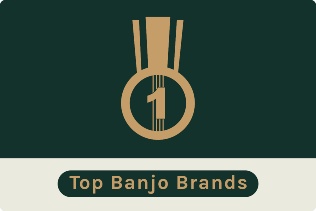
The Expert’s Note
By Paraic McNeela, Founder of McNeela Music
When choosing your first banjo, focus on comfort and playability above all else. If your instrument is easy to tune, feels good in your hands, and inspires you to play, you’ve made the right choice. Specs matter — but the joy of playing is what will keep you learning.
And of course, whenever you’re ready, you can browse our full range of banjos for sale.
Top 7 Beginner Banjos Ranked
1. McNeela Celt Banjo (19 Fret) — Best overall value for beginners
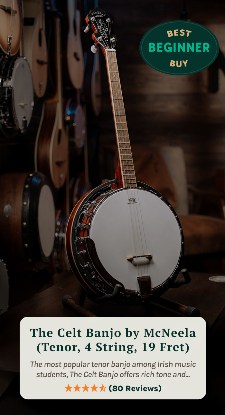
The Celt 19 Fret has become the go-to banjo for Irish music students. It delivers a crisp, traditional tone, with excellent projection for sessions and classes. Fully set up before delivery, it makes the learning curve smoother.
Pros & Cons
- Pros: Reliable build, bright Irish trad tone, setup included.
- Cons: Designed mainly for trad (less ideal for bluegrass).
Expert Tip
This is a banjo you won’t outgrow quickly — perfect for beginners who want to stick with Irish music.
Add the McNeela Celt Banjo (19 Fret) to Cart
2. McNeela Celt 17 Fret Banjo — Best Irish tenor for small hands
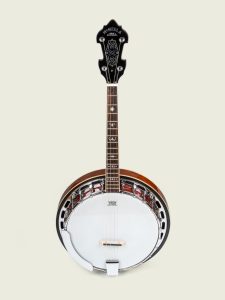
The Celt 17 Fret offers the same craftsmanship as the 19 fret but in a smaller, more comfortable scale. Perfect for kids, teens, or adults with smaller hands who want an authentic Irish tenor sound.
Pros & Cons
- Pros: Comfortable scale, lightweight, easy fingering.
- Cons: Slightly less projection compared to the 19 fret.
Expert Tip
A fantastic option for younger learners joining Irish trad sessions.
Add the McNeela Celt Banjo (17 Fret) to Cart
3. Renegade 5-String Banjo — Best starter for bluegrass & folk
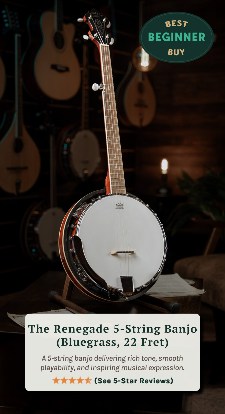
If you’re drawn to bluegrass, folk, or country, the Renegade is the perfect entry point. With a resonator body, it produces the bright, punchy twang that defines bluegrass banjo.
Pros & Cons
- Pros: Affordable, resonant sound, traditional bluegrass feel.
- Cons: Beginner-level hardware, not as refined for advanced players.
Expert Tip
Start practicing rolls and simple chord progressions — this banjo will help you sound “session ready” quickly.
Add the Renegade 5-String Banjo to Cart
4. Freedom 5-String Banjo — Best upgrade-ready beginner banjo
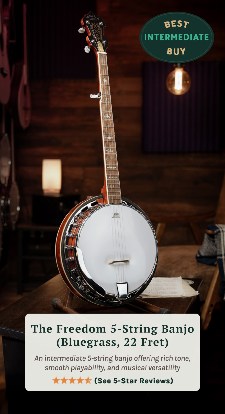
The Freedom is ideal for beginners who want a higher-quality instrument they won’t outgrow quickly. With 22 frets, better components, and strong projection, it’s built to perform.
Pros & Cons
- Pros: Excellent craftsmanship, professional sound, long-term value.
- Cons: Higher price than basic beginner models.
Expert Tip
If you’re committed to learning banjo, investing here means you won’t need to upgrade too soon.
Add the Freedom 5-String Banjo to Cart
5. Koda 17 Fret Banjo — Best budget Irish tenor under €400
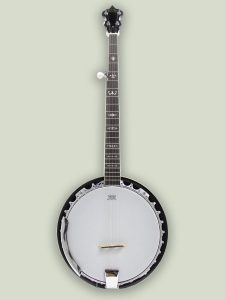
Koda’s 17 fret model is one of the most affordable ways to get into Irish trad banjo. While simpler in design, it provides decent tone and stable tuning for learners.
Pros & Cons
- Pros: Very affordable, light, decent tuning.
- Cons: Tone not as rich as McNeela Celt models.
Expert Tip
Think of this as a “stepping stone” instrument before upgrading to a Celt.
Add the Koda 17 Fret Banjo to Cart
6. Koda 19 Fret Banjo — Reliable starter choice for Irish trad learners

With slightly more projection than the 17 fret, this Koda model is a budget-friendly way to learn tenor banjo. Great for complete beginners looking for their first session instrument.
Pros & Cons
- Pros: Affordable, playable, entry-level trad sound.
- Cons: Lacks refinement compared to higher-end models.
Expert Tip
This is a great first tenor banjo if you’re exploring Irish trad and want to stay within budget — just pair it with a good setup and you’re ready to go.
Add the Koda 19 Fret Banjo to Cart
7. Koda 5-String Banjo — Trusted beginner pack with accessories
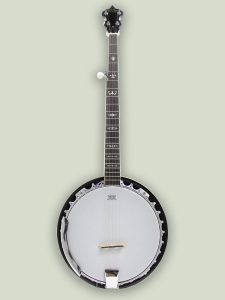
An all-in-one pack for those starting bluegrass or folk. Includes accessories that make starting easier.
Pros & Cons
- Pros: Complete beginner bundle, very accessible price.
- Cons: Not built for long-term growth.
Expert Tip
A good choice if you want to try a banjo before committing to a premium instrument.
Add the Koda 5-String Banjo to Cart
Beginner Banjos in 2025: A Quick Comparison
| Model | Type | Price Range | Best For |
|---|---|---|---|
| Celt 19 Fret | 4-string tenor | €600–€700 | Irish trad learners |
| Celt 17 Fret | 4-string tenor | €550–€650 | Kids/small hands |
| Renegade 5-String | 5-string | €400–€500 | Bluegrass starters |
| Freedom 5-String | 5-string | €600–€700 | Committed beginners |
| Koda 17 Fret | 4-string tenor | ~€390 | Budget beginners |
| Koda 19 Fret | 4-string tenor | ~€385 | Entry-level trad |
| Koda 5-String | 5-string | ~€390 | Beginner pack |
As you see, Koda models are the most affordable entry-level choice, ideal if you’re just testing the waters. The Celt and Freedom banjos, while higher in price, provide better sound, durability, and setup — making them smart investments if you plan to play for the long term.
Browse our full selection of banjos for beginners.
Price Range – What to Expect as a Beginner
Entry-level vs. mid-range starter banjos
If you’re wondering how much you should spend on your first banjo, you’re not alone — it’s one of the most common questions we hear. For most learners, the sweet spot is between €250–€450, where you’ll find well-made instruments that are easy to play and built to last.
Under $200: Banjos under $200 might be tempting, but they often sacrifice too much: poor tuning, thin sound, and fragile parts. These are common pitfalls shared in player communities (instruments that quickly end up abandoned in the corner).
For most learners, $300–$500 (€250–€450) is the sweet spot. It’s enough to avoid frustration, ensure good tuning, and build real confidence. If you’re already musically active or buying for a motivated learner, a mid-tier option like the Celt or Freedom can serve well for years.
How to Choose the Right Beginner Banjo
4-string vs. 5-string — which is best for your style?
- 4-string tenor: the backbone of Irish traditional music. Tuned like a fiddle/mandolin (GDAE), easy for melody players.
- 5-string: the heart of American bluegrass and folk. Distinctive twang, ideal for rolls and accompaniment.
If you’re into Irish music, go tenor. For bluegrass or Americana, start with a 5-string.
Other starter options — plectrum and 6-string hybrids
- Plectrum banjos: 4 strings with longer necks, great for jazz chord strumming.
- 6-string banjos: tuned like a guitar, ideal if you already play guitar and want to explore banjo tones.
Expert Note: These hybrid instruments can be useful if you’re switching from guitar or exploring different genres, but for most true beginners, a traditional 4-string or 5-string banjo will be the best starting point.
Key features to look for in a first banjo
Choosing your first banjo isn’t just about budget — the right features will make the difference between frustration and enjoyment. When evaluating beginner models, keep an eye on the essentials:
- Smooth fretwork and low action: for comfort.
- Reliable tuners: for stability.
- Solid tone ring or rim: for decent projection.
- Lightweight build: for better handling, especially for kids.
- Factory or expert setup: to make the most of the instrument.
A professional setup can turn an average banjo into something that feels custom-made for you — that’s why all McNeela banjos are fully checked and adjusted before shipping.
Expert Tip: Don’t get distracted by looks or marketing claims. A simple, well-built banjo with a proper setup is worth more than a flashy but poorly made one.
Common mistakes beginners should avoid
When buying your first banjo, it’s easy to make choices that will hold back your learning. These are the mistakes I see most often:
- Buying the cheapest banjo available: Ultra-cheap models might look tempting, but they often won’t stay in tune and feel uncomfortable to play.
- Skipping professional setup: Even a good banjo can sound poor if it isn’t adjusted properly. That’s why every McNeela banjo is professionally set up before leaving our workshop.
- Not thinking about music style (4-string vs 5-string): Choosing the wrong type for your style can lead to frustration and wasted practice.
- Overlooking size and comfort: A 19-fret banjo might feel too big for a child or someone with small hands. A 17-fret option can make a huge difference.
- Ignoring long-term value: Many beginners underestimate how quickly they improve — a slightly better banjo gives you room to grow and enjoy playing longer.
- Falling for “brand name” marketing: Always check player reviews and expert recommendations before buying.
Beginner vs. Advanced Banjos — Key Differences
Playability, setup and sound quality
Beginner banjos prioritise comfort and affordability — think lighter builds, forgiving action and simple tuners. As you move up, you get refined hardware, richer tone, and an overall smoother playing experience. A well-made intermediate banjo responds better to your touch and sounds cleaner up the neck.
When to upgrade from beginner to intermediate
Upgrade when your banjo starts to limit you. For example, if you need more volume for sessions, cleaner intonation past the 7th–9th fret, or better dynamic range for recording. Another sign is buzzing or an uneven tone even after a proper setup.
If you’re practising regularly, joining ensembles or gigging, moving to an intermediate model will reward your progress with richer tone and easier playability.
Tips from the Expert — Paraic McNeela’s Advice
How much to invest as a first-time buyer
“I always recommend choosing a banjo that excites you to pick it up. €300–€500 is a healthy range for a beginner instrument that won’t hold you back. If you know you’re committed, it’s worth stretching to €600–€700.”
Choosing the right size and fret length
- 17-fret tenor: shorter scale, ideal for small hands or children.
- 19-fret tenor: extra reach, better volume. Most adults will adapt to either, but comfort is key.
Why setup matters more than specs
Even the finest banjo can sound flat without a good setup. Correct head tension, bridge placement and string height transform tuning stability, comfort and tone from day one.
Many new players focus on materials or design — but a proper setup has a much bigger impact. Every McNeela banjo is set up by our team so that it arrives ready to play, with correct intonation, fret buzz eliminated, and a clear, warm tone.
Our Recommended Selection of Beginner Banjos
We’ve carefully selected our Beginner Banjo range to meet the needs of first-time players. Whether you’re into Irish trad or bluegrass, you’ll find models that are easy to play, fairly priced, and ready to go. Each instrument includes professional setup and support — and is backed by our McNeela guarantee.
Explore our full Beginner Banjo Collection:
Our Recommended Selection of Banjos
The McNeela Favorites
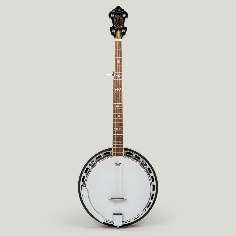
The Freedom 5
String Banjo
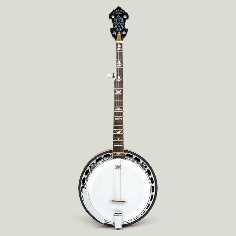
The Liberty
5-String Banjo
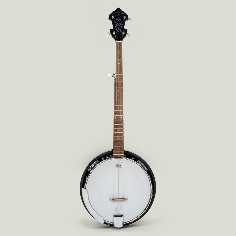
The Renegade
5-String Banjo
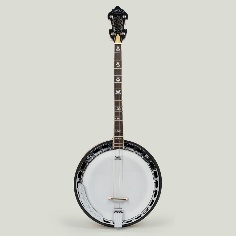
The Viking 4 String
Banjo
Watch — Choosing the Right Beginner Banjo
One of the best ways to choose your first banjo is to hear and feel the difference. In this short video, Jon Reville demos our Celt 4-String Tenor Banjo — a favourite beginner pick.
Celt 4-String Banjo review — beginner-friendly tenor banjo demo by Jon Reville.
Listen for the quick response, clean intonation and lightweight feel that make it so encouraging for new players.
Conclusion: Our First Choice
If you’re still unsure, let me simplify things: my number one recommendation for most beginners is the McNeela Celt 19 Fret Tenor Banjo.
Why? Because it combines everything a beginner needs: authentic Irish trad tone, smooth playability, and great value. It’s already trusted by thousands of learners worldwide.

Why we Recommend It:
- Beginner-friendly action, easy on the hands
- Excellent tone and volume for Irish trad
- Comfortable feel, great for beginners
- Long-term value — won’t need to upgrade too soon
- Comes fully set up and ready to play
- Includes padded gig bag
“It’s the model I designed to help beginners fall in love with the banjo, and judging by hundreds of happy players worldwide, it continues to deliver.” — Paraic McNeela
“Absolutely gorgeous. Love the sound. Great all around.” — Myles G
“Lovely resonance compared to my old banjo. Excellent value for money.” — Simon
The Expert’s Tip
If you’re just getting started and want the best balance of quality, affordability, and playability for your first banjo, I always recommend The Celt Banjo by McNeela. As both a musician and instrument maker, I designed The Celt to help beginners fall in love with the banjo. It’s affordable, yet it offers the resonance, easy action, and build quality you’d expect from a much more expensive model.
Choose the best beginner banjo you can comfortably invest in. Specs are nice, but the setup is what makes you want to pick it up again tomorrow.
Frequently Asked Questions About Banjos for Beginners
How much should I spend on my first banjo?
Most learners should budget $300–$500 (€250–€450). At this level, you’ll get an instrument that stays in tune, feels good to play, and will last you beyond your first year.
Should I start with a 4-string or 5-string banjo?
You should make your choice based on your music goals. 4-string banjos are tuned like a fiddle/mandolin and suits Irish trad; 5-string banjos are tuned for bluegrass rolls and folk rhythms.
Are cheap banjos OK for beginners?
Reddit users agree: avoid very cheap banjos. They often don’t stay in tune and can frustrate beginners. It’s better to spend a little more for an instrument that encourages progress.
What makes a banjo good for beginners?
Lightweight, stable tuning, smooth frets, and proper setup. These features make it easier and more enjoyable to learn.
Can kids learn the banjo?
Yes. Shorter 17 fret models are perfect for smaller hands, making them a great choice for children starting their musical journey.
Is it better to buy a new or used banjo as a beginner?
New banjos usually come with a warranty and professional setup, making them a safe choice. Used instruments can be great if you buy from a trusted source, but avoid budget brands with poor reputations.
Ready to buy?
Looking to buy your first banjo or upgrade to a professional model? Explore our full range of beginner banjos
Further reading
If you’re just getting started or planning an upgrade, don’t miss these resources:
- See our guide to the best banjos under $500
- Learn the difference between 5-string and 4-string banjos
- The Ultimate In-Depth Banjo Buyer’s Guide for Beginners
- Irish Tenor Banjo Buyer’s Guide
Ready to shop? Explore our full collection of String Instruments — professionally set up and safely shipped worldwide.
Quick links:

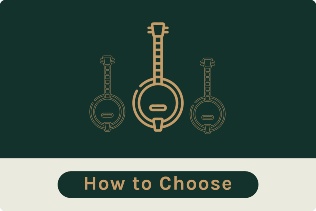





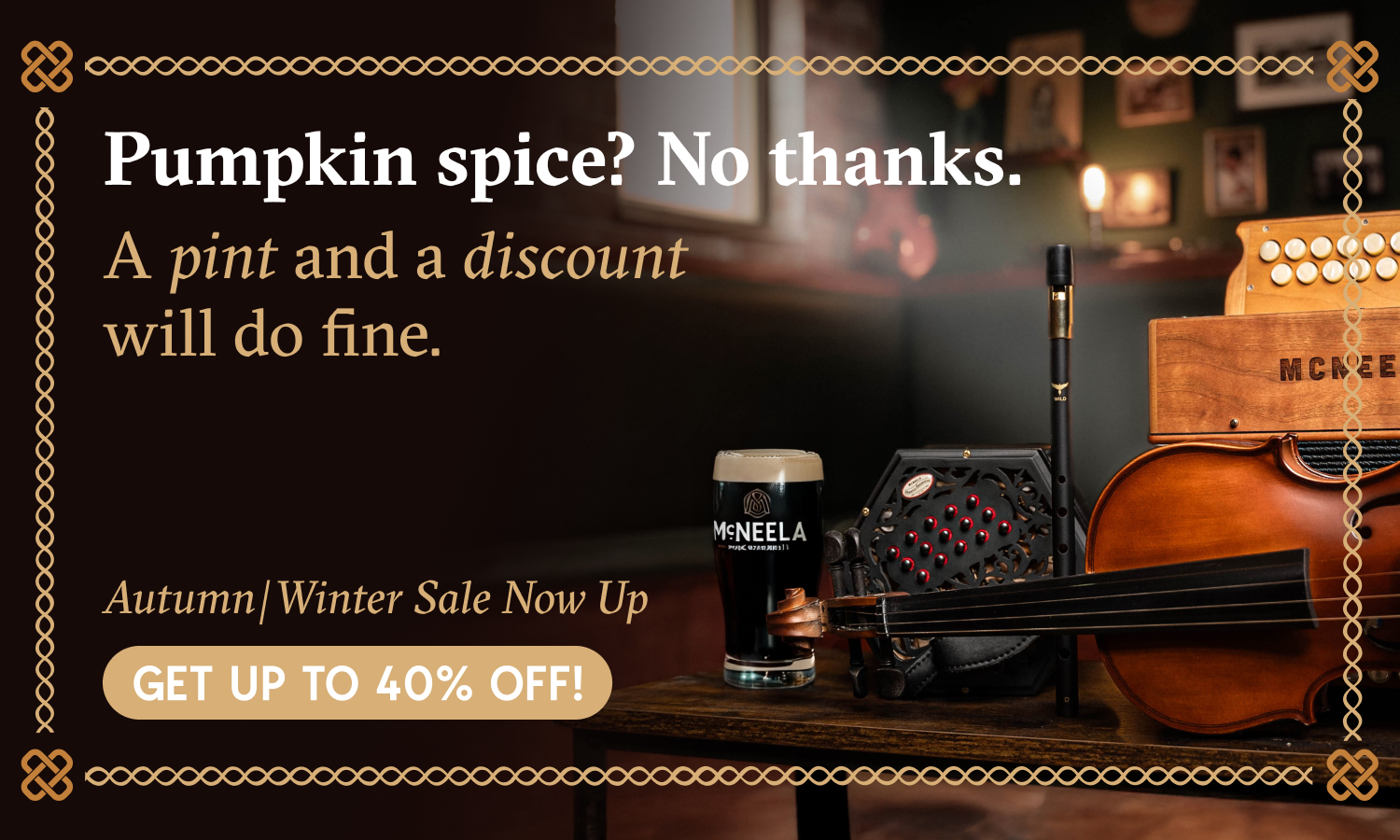
Share your thoughts